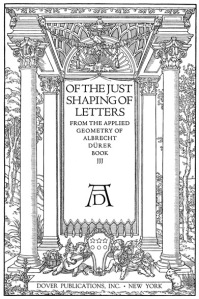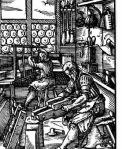A spring of truth shall flow from it; like a new star, it shall scatter the darkness of ignorance and cause a light, heretofore unknown, to shine amongst men.
Johannes Gutenberg referring to the printing press
Johannes Gutenberg’s dream was that information, knowledge, and truth should be available to the masses. While his Bible still cost three-years’ wages for a clerk, it was more affordable than the expensive hand-copied manuscripts available only to the rich and noble.
Because of printing, we, in this 16th century, now stand upon the threshold of the golden age of learning, the renaissance of the arts, the studies of the humanities, the progress of science, and the age of exploration. For surely the foundation of all these advances is the international communication of ongoing discovery and continuous creation. Printing makes that sharing across lands possible. (Columbus, as a child, possessed a printed geography book.) This is why Gutenberg is considered the most influential man of this millennium.
Today, Capito praises not only Gutenberg, but the thousands who follow in his footsteps via the medium known, most appropriately, as Project Gutenberg.
Project Gutenberg was begun by Michael Hart, a first-year student at the University of Illinois, who entered the American Declaration of Independence into his computer on July 4, 1971. An inauspicious beginning, but Hart, like Gutenberg, had a vision. (His once-stated goal was to make a million books available to 10% of the world’s population. Doubtless that will prove to be too modest.)
Today, after 40 years, Project Gutenberg is the largest repository of electronic books in the world. At this date, close to 40,000 books have been digitized in fourteen major languages. These books are available in multiple formats and can be read on many instruments. Usually available to read in less than a minute. And always without cost.
The worthy objective of Project Gutenberg is vastly advanced by the mustering of the common herd of us ordinary people through the organization known as Distributed Proofreaders. Founded in 2000 by Charles Franks, Distributed Proofreaders provides a simple way for any reader to donate a tiny bit of his time to proofreading a text before it is finalized. One can proofread as little as a page.
As of today, 21,414 texts have been proofread by volunteers for Distributed Proofreaders and posted to Project Gutenberg. Five hundred and thirty-five are being proofread right now. Sign in and you can begin helping immediately. As one who has proofread his share of texts at the printers, Capito can attest to the importance of this function.
 One of the books recently made available through the efforts of Distributed Proofreaders and Project Gutenberg is Of the Just Shaping of Letters by Albrecht Dürer released on August 16.
One of the books recently made available through the efforts of Distributed Proofreaders and Project Gutenberg is Of the Just Shaping of Letters by Albrecht Dürer released on August 16.
In this book, the great artist instructs his readers on the geometry behind the formation of the letters in the Latin alphabet. Even if you are not an artist, stone carver, or one otherwise engaged in the Art Pictorial, Dürer’s brief introduction is most amusing and reflects the great man’s personality.
To think that this book, written in German in 1535 should be immediately available for the English reader to enjoy in his chair, without cost, astounds the mind. By the muses, what a great age in which to be alive!








